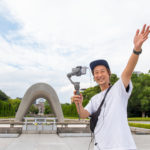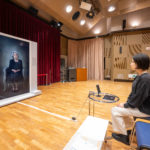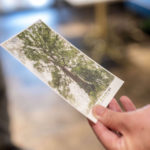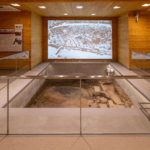Along with the bombed buildings that still remain.
Passing down people’s experiences to future generations – Kaihoji Temple, Eba
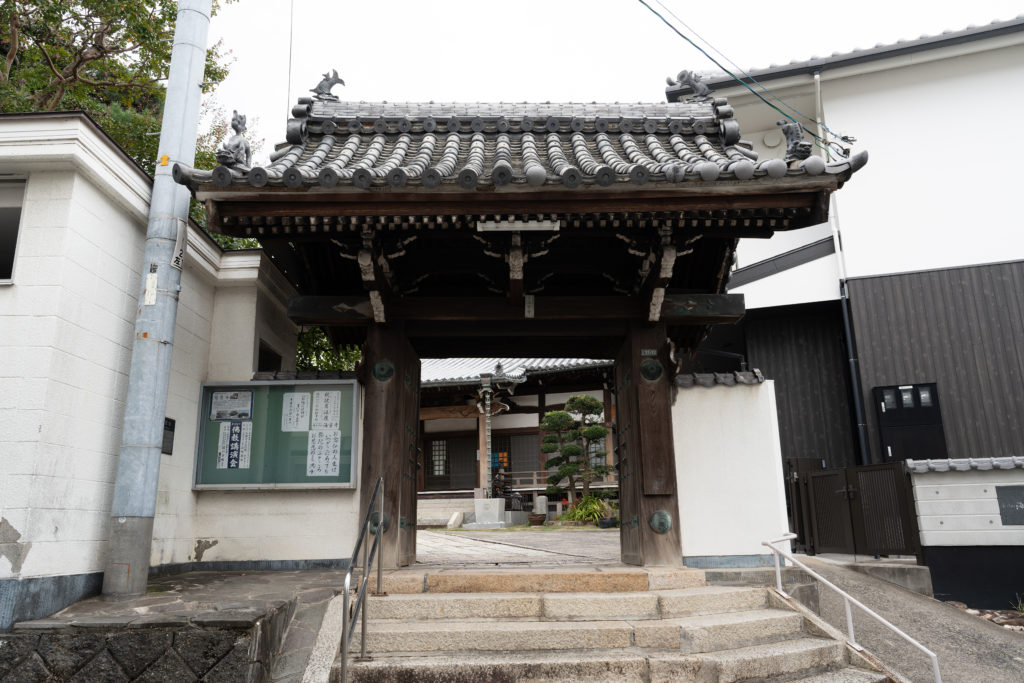
Kaihoji Temple of the Honganji sect of Jodo Shinshu was founded in 1568 (Eiroku 11) during the Warring States period in what is now Eba, Naka-ku, Hiroshima City. It is said to have stood in this site since an even older time, and it is a historic temple that has long been loved by the local people.

Kaihoji Temple, at an approx. 11 minute-walk from the Hiroden Eba Station.
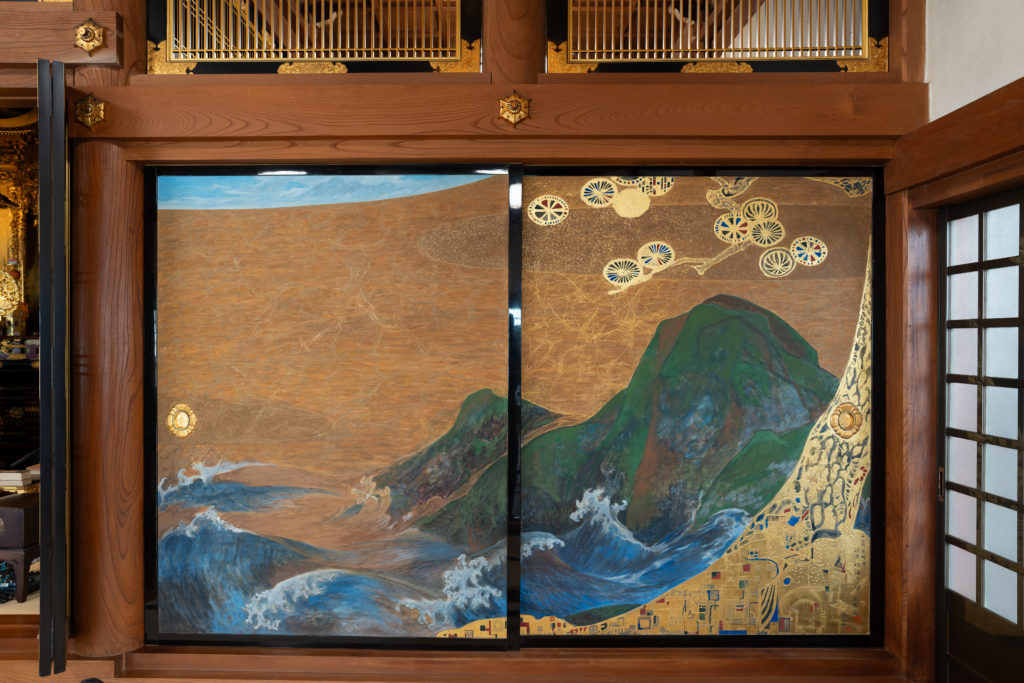
A sliding door painting in the main hall. The painting was created by painter Funada Kishin to commemorate the 450th anniversary of the foundation of the temple.
The 110-year-old wooden gate standing at the entrance to the temple grounds is registered as a building that suffered the atomic bombing. It was exposed to the blast wave about 3.5km from ground zero. Nagato Gijo, the 15th head priest of Kaihoji Temple, guards the bombed gate, and passes on the stories he has heard from the previous head priests and residents to local elementary school students.
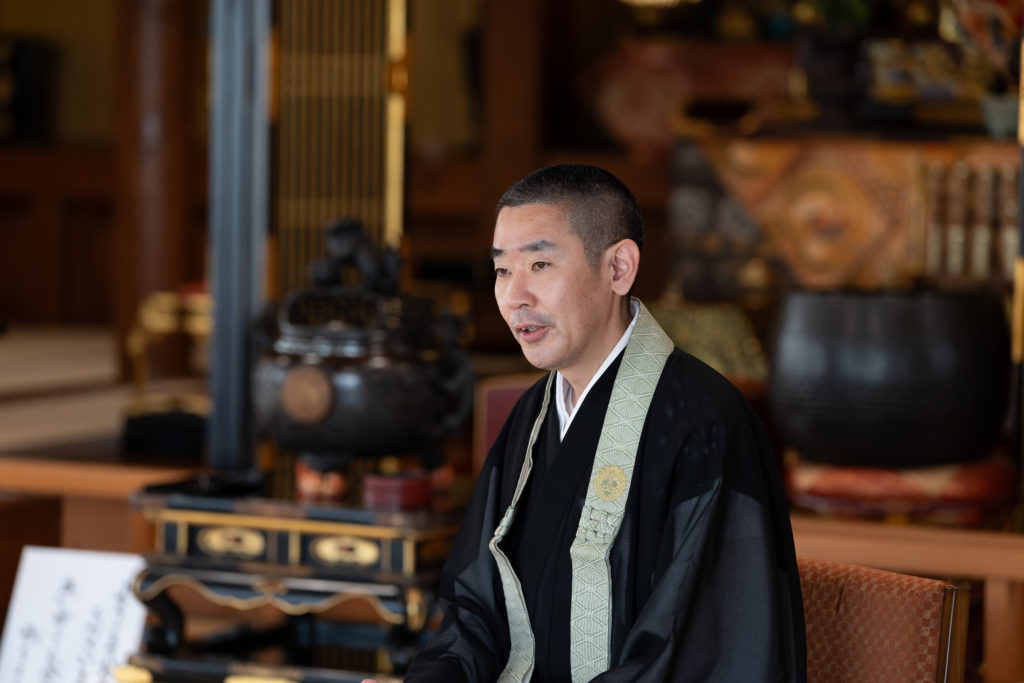
Nagato Gijo, the 15th head priest of Kaihoji Temple
“In 1945 (Showa 20), when the atomic bomb was dropped on Hiroshima, the 221-year-old main hall was so badly damaged that most of the roof tiles were blown away and the building was tilted. According to people living in the neighborhood, the walls of private houses in the area were also blown away, and tatami mats flew up and broke through the ceiling of the second floor. The main hall of the temple was covered with a tin roof for a while, but the roof was rebuilt in 1984 (Showa 59). The gate still retains its original appearance.”
The head priest tells these stories once or twice a year to local elementary school students when they visit the temple for peace studies or to explore the town. When he shows them the bombed gate and the names of 319 people engraved on the memorial monument for war victims on the temple grounds, the children’s expressions change, he says. “The children seem to feel something when they see the real thing,” says the priest.
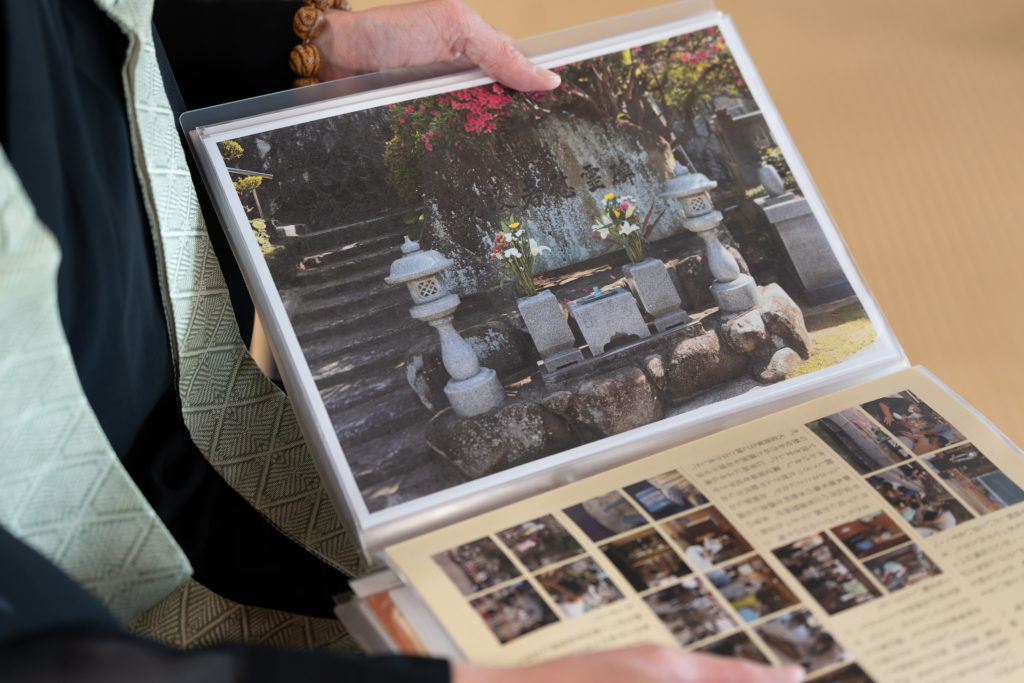
Materials compiled for the story. Rare photos and other things showing how things used to be are also preserved

The memorial monument for war victims on the temple grounds. The local Eba Bereaved Families Association still cleans it and offers flowers.
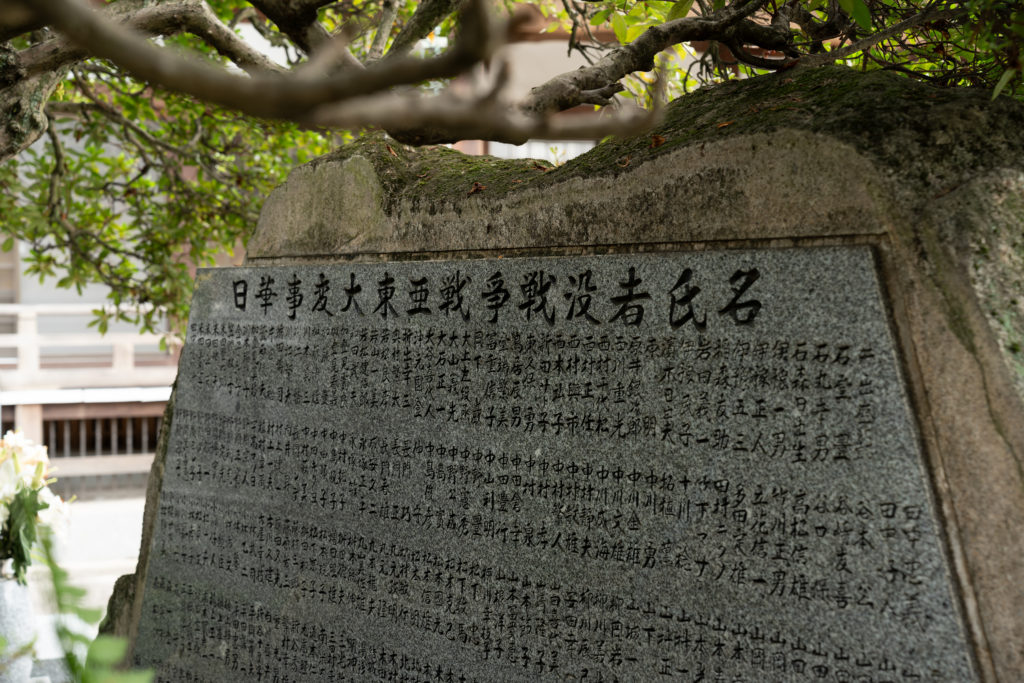
The back side of the monument. The names of the victims are engraved
According to the priest, on the day of the atomic bombing, the windows on the local elementary school broke and it suffered other damage, but many people with burns and injuries were brought in, which caused great confusion. Along with a military medical team, the school principal also stayed overnight at the school to help people. That day was also the day of the summer festival in Eba. Some people working on building removal (*1) in the center of Hiroshima City had others take their place because they had to work on the festival, but the people they switched with died in the bombing, and they are still regretting that decision.
(*1) Building removal: Demolishing buildings in advance to create a fireproof area in order to prevent fires from spreading due to air raids.
There was also a story about a girl who was in elementary school at the time and had temporarily returned to Eba from an evacuation site, only to witness her father die. On the day she was to return to the evacuation site, her father kept her in Eba, saying that he would cook something tasty for her. The next day, however, he went to the center of Hiroshima City, where he was exposed to the atomic bombing. He returned home, but soon parted with his daughter. “I heard that the girl cremated her father alone on the beach in the midst of the chaos,” says the priest.
Memoirs remain saying that at the mouth of the nearby Honkawa River, people with burns all over their bodies from the bombing died on rafts, kneeling on one knee with their hands raised, probably from the pain of the burns they sustained.
“The experiences of the locals and stories of what happened at the time of the bombing naturally gather at the temple. I thought war was a thing of the past, but when I look at the situation in Ukraine today, it is by no means something distant from us. I think it is an important role of the temple to pass on the stories of residents to children and future generations.”
At Kaihoji Temple, not only the temple gate but also the bell tower on the temple grounds were once registered on the list of buildings exposed to the atomic bomb. However, the pillars collapsed in a typhoon in 2004 (Heisei 16), and the building was rebuilt, so it has now been removed from the list. Some of the components from the time of the bombing have been reused, and the faded colors still tell their age.
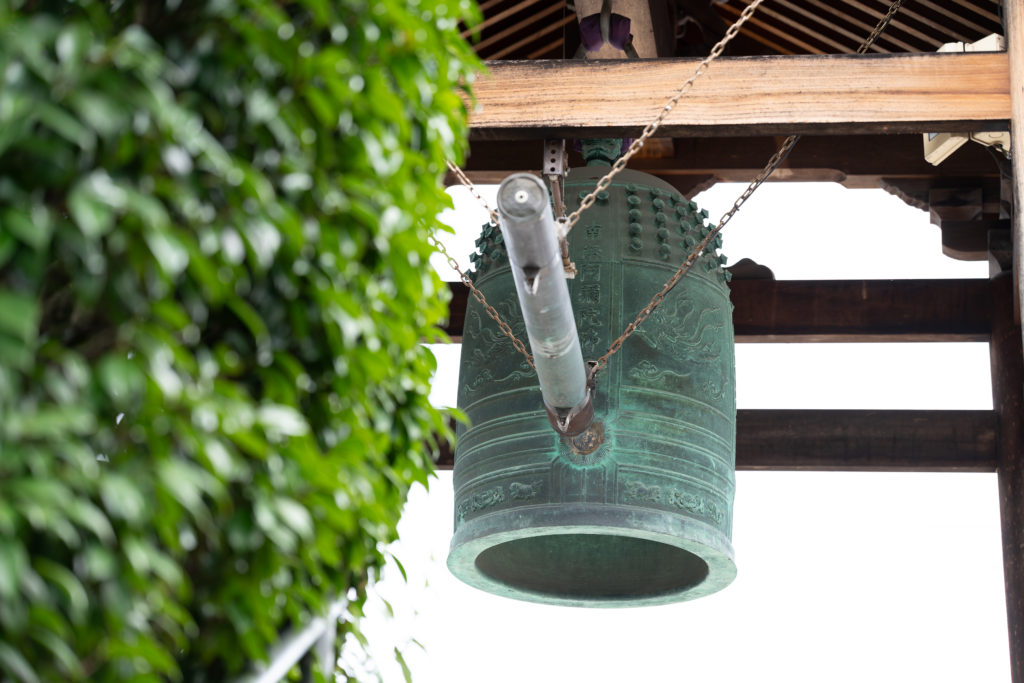
The belfry of Kaihoji Temple
The temple bell had been collected by the government during the war due to metal shortage, but in 1958 (Showa 33), Mitsuhiro Saburo, a local resident who lost his family in the atomic bombing, donated a bell to the temple as a symbol of his wish for peace. Mr. Mitsuhiro and the head priest of the temple at that time chose “the bell with the best tone” in Kyoto, and the beautiful sound of the bell still echoes throughout Eba every morning and evening.
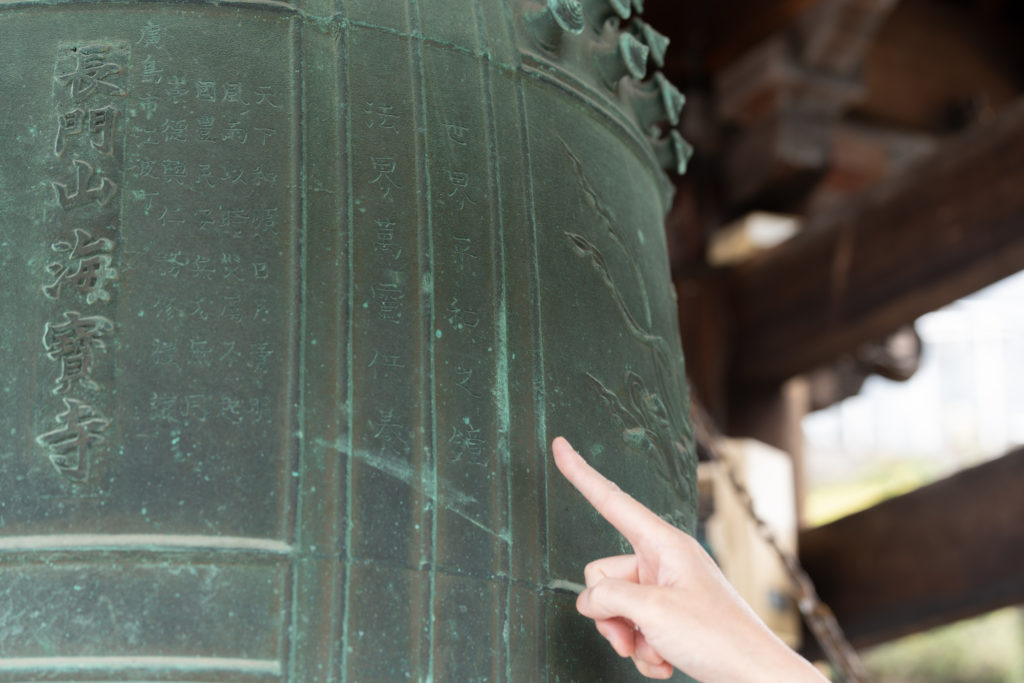
The donated bell is inscribed with the words “Bell of World Peace”
At Kaihoji Temple, along with the gate, which tells the history of the atomic bombing and the war, the stories of the people of the town and the wishes put into the bell tower have been carefully passed down through the generations. “The wood under the tiles of the gate has become old and needs to be repaired. However, in order to do so, we need to replace the roof tiles, and since we are not eligible for cost subsidies for buildings which suffered the atomic bombing, we are at a loss for what to do.”
Since preservation work is expensive, many managers of bombed buildings are searching for a good solution in consultation with city and other officials.
How can we preserve the memories left in the temple gate and the stories gathered from local residents for today’s children and for future generations? Mr. Nagato is seeking ways to do this while sharing information with the priests of other temples who are also passing on people’s war stories.
Kaihoji Temple
1-11-12 Eba-Minami, Naka-ku, Hiroshima City
082-232-0767
Tags associated with this article



